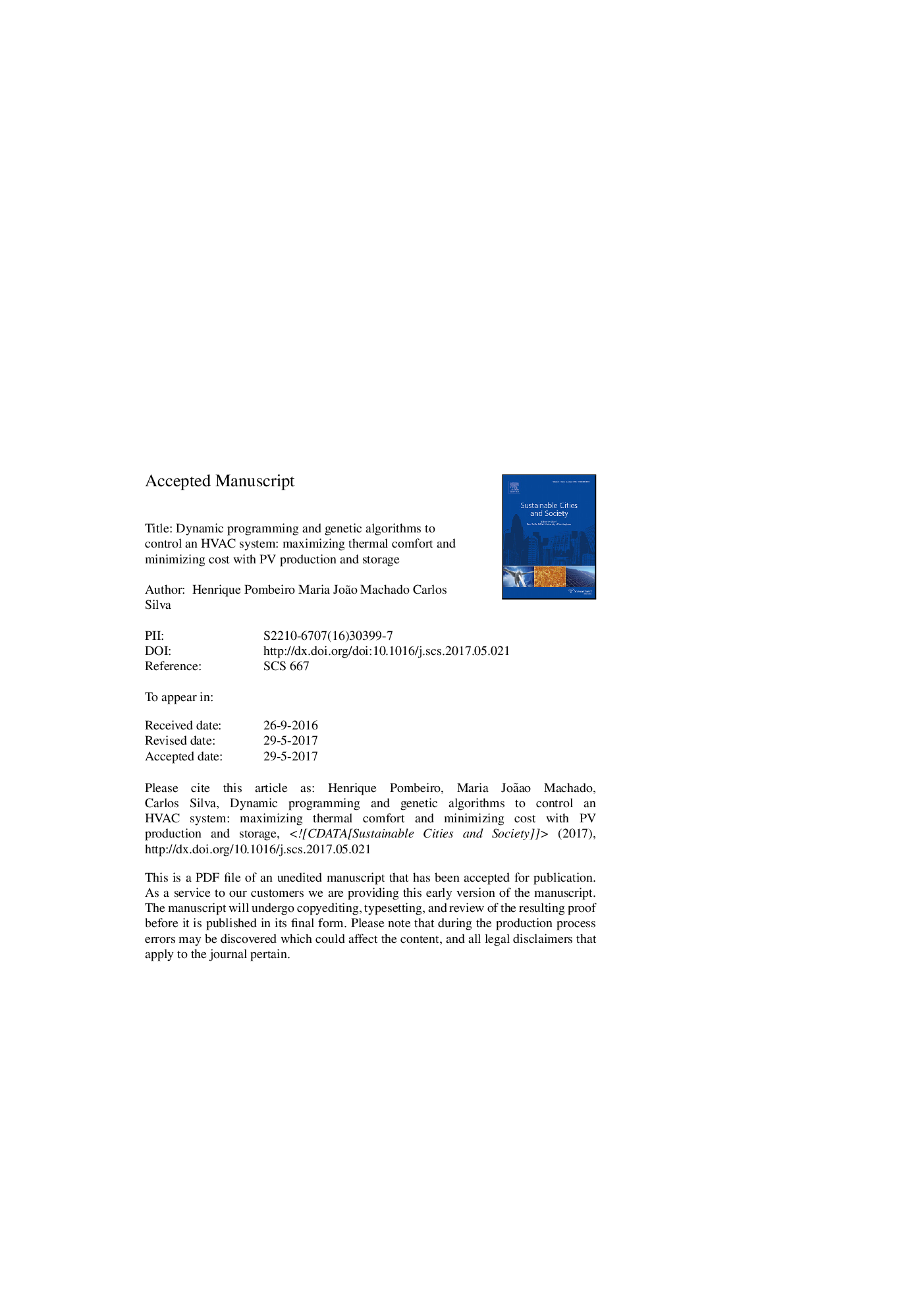| Article ID | Journal | Published Year | Pages | File Type |
|---|---|---|---|---|
| 4928185 | Sustainable Cities and Society | 2017 | 19 Pages |
Abstract
The genetic algorithm model that uses EnergyPlus to simulate indoor temperature generally achieves higher convergence to the optimal value, which also is the one that uses more electricity from the PV system to operate the HVAC. The dynamic programming performs better than the genetic algorithm (both coupled with STM). However, it is limited by the fact that uses STM, which is a less accurate model to simulate indoor temperature especially because it is not considering thermal inertia.
Keywords
Fan coilPV productionEnergyPlusPMvCOPPPDSTMBEMSIEAThermal comfortInternational energy agencyGenetic algorithmISODynamic programmingEnergy efficiencyOptimizationHVACAir conditionerStorageInternational Organization for StandardizationBuilding energy management systemcoefficient of performancePhoto-VoltaicDemand responseHeating, Ventilation and Air Conditioning
Related Topics
Physical Sciences and Engineering
Energy
Renewable Energy, Sustainability and the Environment
Authors
Henrique Pombeiro, Maria João Machado, Carlos Silva,
